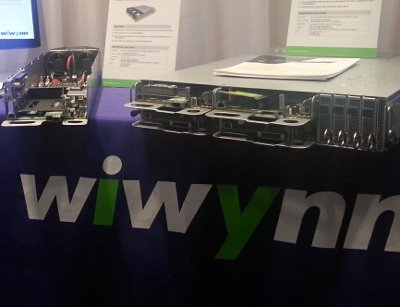Rackspace, one of the world’s largest hosting and cloud-infrastructure providers, is on its way to becoming the first company of a kind other than the web giants of Google’s and Facebook’s caliber to stray away from buying servers and storage gear from traditional IT vendors – such as HP or Dell – choosing instead to design its own gear and use the same manufacturers those traditional vendors use to make it.
While Facebooks, Googles and, reportedly, Amazon’s of the world do all their server design work in-house, Rackspace went about it the way so many software companies have gone about building software products for years: using collective wisdom (and technology) of the open-source community.
Designs for the next generation of hardware to run in San Antonio, Texas-based company’s data centers are based on designs available to the public through the Open Compute Project (OCP), an open-source hardware and data center design community Facebook started in 2011 (also a first-of-its-kind). Facebook kicked off OCP by opening to the public design documents for servers it had created for its own data centers.
Until now, however, no large-scale end user besides Facebook has shared plans to use OCP designs to build their own equipment. Rackspace’s move in that direction is a major validation of the idea that, unless it’s at the scale of one of the Internet’s empires, a company does not have to be limited to the choices of IT gear an HP, a Dell or an IBM has made available to it.
Rackspace COO Mark Roenigk announced the move at the fourth Open Compute Summit in Santa Clara, California, Wednesday. The company plans to install OCP-based servers in one of its newest data centers within the first half of 2013.
Rackspace answers ‘what-ifs’ about OCP
Frank Frankovsky, director of hardware design and supply chain at Facebook and head of the OCP, says what Rackspace’s announcement does for OCP is answer “a lot of the questions that I think are on a lot of people’s minds.” The questions that give potential users of OCP equipment cold feet are practical things like, “Is the technology available from multiple sources?” There are questions about the support level and quality of the engineering team the user would be working with. “What’s this going to be like if I go down the Open Compute path?”
Rackspace, with its constantly growing user base, has to have multiple suppliers. One of its OCP manufacturers is Wiwynn Corp., a Taiwan-based original design manufacturer (ODM). Wiwynn will be making servers for Rackspace using as foundation Winterfell, a new web server Facebook designed, open-sourced and announced at the summit on Wednesday. Rackspace’s other OCP supplier is Quanta Computer, also a Taiwanese ODM. The design for Rackpace’s Quanta servers is still in development stages.
Both ODMs are also working with Rackspace to manufacture JBOD storage gear, available through Open Compute’s Open Vault project for storage hardware.
Rackspace also uses a modified version of Open Rack – another OCP child – in its data centers and its OCP IT equipment is designed to be compatible with the rack. The main alterations are two power zones instead of three (to deliver more power to a single cabinet) and the addition of space for a cable-management bay. Each power zone includes space for server nodes or storage and a power shelf, which supplies power to IT gear in the zone and has a power back-up system.
Free engineer brains
Perhaps the biggest value of OCP in practical terms is it gives users free engineer brains. Firms that do not have huge in-house hardware engineering capabilities can get the engineering resources they need through the open-source community. “By nature, they’re not a big hardware engineering company, they’re not a supply chain company,” Frankovsky says about Rackspace. “They didn’t have to go off and build a huge hardware-engineering effort internal to Rackspace, ‘cause that’s not their business.”
Rackspace used building blocks Facebook and others had contributed to OCP as a head-start to develop solutions that suited its particular needs. And, staying true to OCP’s open-source model, the company is contributing the designs to the community.
Open-source software for open-source hardware
The open-source hardware at the Texas company’s data centers will be controlled by open-source software. OpenStack is a cloud operating system and a child of an open-source software-development project Rackspace started together with the US National Aeronautics and Space Administration (NASA). Popularity of the operating system, developed as an open-source alternative to Amazon’s proprietary cloud technology, OpenStack’s popularity is on the rise. Rackspace was one of the first providers that committed to building the next generation of its cloud services using it village-raised child last year.
Jonathan Bryce, executive director of the OpenStack Foundation and a former Racker (that’s what Rackspace employees call themselves), who was one of the founders of Rackspace’s cloud division, says the company’s decisions to choose open-source hardware and software to build cloud services on was a “disruption of the standard way of doing things.” That means a shift from companies being beholden to the IT vendors’ idea of what technology works best for most customers to companies controlling their destiny by choosing exactly the components they need in their data centers and what runs on those components.

